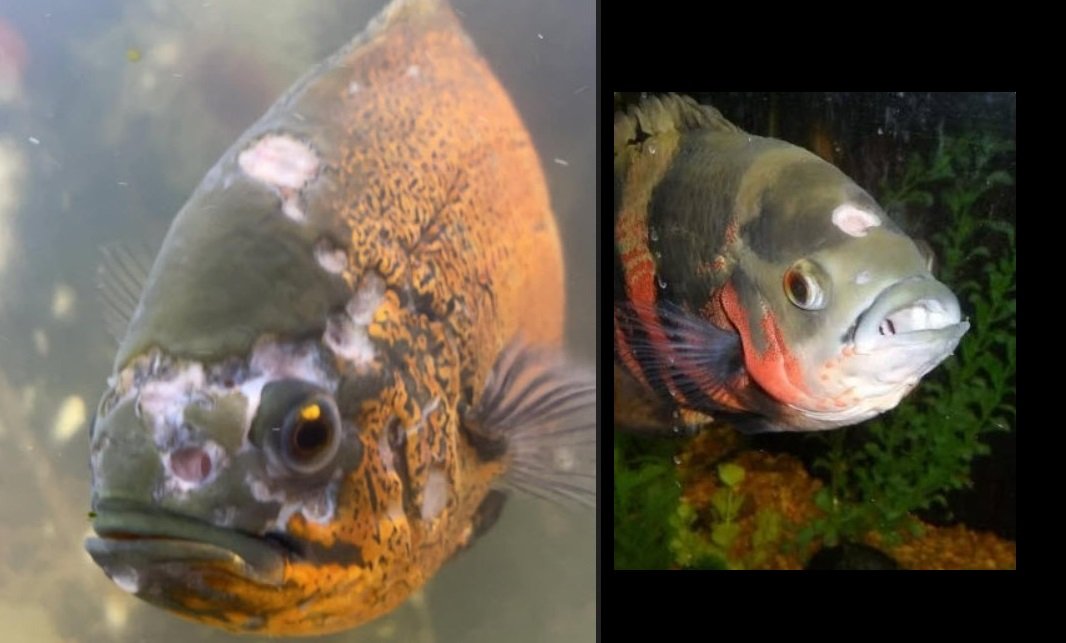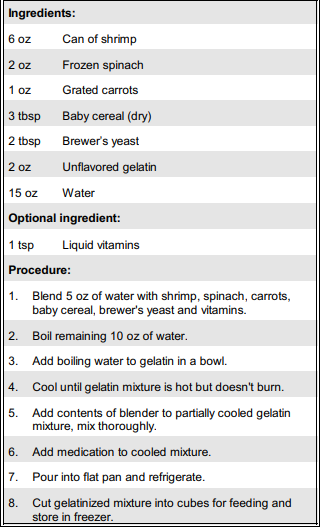Hexamita, or hole in the head, is a very common yet critical disease in fish. To treat Hexamita disease in a fish, you have to use Metronidazole medication. Other than that create a non-toxic environment in the tank and follow a nutritional diet.

While the medication is for treating the disease, the other two options are to ensure better health for the fishes. To get a more detailed explanation of the treatment and dosage, stick till the end, as we will go through all of it.
What Is Hexamita Disease In Fish?
Hexamitiasis, or a hole in the head, is a disease in fish that mainly occurs due to the presence of the Hexamita parasite in their body. It typically targets freshwater and marine fish.
Despite the name of the illness—”a hole in the head”—it does not originate there. The beginning of the illness takes place inside the fish’s digestive system. From there, it starts spreading throughout the body of the fish.
First, it affects the gall bladder, then the kidneys, the abdominal cavity, and finally the head of the fish. Therefore, the disease is almost completely advanced by the time you notice a hole in the head of your fish.
The most common victims of this disease are cichlids such as angelfish, discus, severums, and Oscars. Among these three, Discus is much more prone to getting affected by the parasite. Hexamita can also cause harm to some carp, including goldfish and koi.
What Causes Hexamita Disease in Fish?
Of course, the primary cause of the Hexamita disease is the Hexamita parasite itself. But just the parasite being inside the guts of your fish doesn’t trigger this disease. Let’s take a look at what causes the disease to spread.
Large numbers of Hexamita
Hexamita are typically only found in small amounts in fish guts. When the number is too low, it can’t cause any harm to the fish. However, if the immune system of your fish isn’t strong enough, parasites can quickly grow in numbers.
Several factors can affect the immunity of your aquarium fish. For example –
- Stress
- Unhygienic water conditions
- Lack of nutrition
- Overcrowding of fish
- Old age
A fish going through one or multiple causes can have a weaker immune system, which enables the parasite to grow in numbers. As the parasites multiply, they begin to spread throughout the fish’s body and eventually take full control with hexamitiasis.
Activated carbon
Many studies and research suggest that activated carbon in the aquarium can also cause hole-in-the-head disease. Apparently, these activated carbons can emit some types of compounds that can be irritating for the fish.
Activated carbon also tends to remove some necessary elements from the water that a fish usually requires. A combination of emitting irritating compounds and removing necessary compounds weakens the immune system of the fish living in the tank.
How Can You Diagnose The Hexamita Disease In A Fish?
Well, as you already know, by the time you see a hole in the head of your fish, it’s already too late. So, you must know the other potential signs to diagnose Hexamita disease in a fish. Let’s get through some of those signs –
Signs of Hexamita
- White stringy poop
- A pimple on the head
- Fish starts to become thinning
- Loss of appetite
- An unusual way of swimming
- Ragged fins
- Becomes less active than usual
- The skin color may change or get darker
- Swollen abdomen can also be a sign (especially for angelfish)
Whenever you see these signs, you might want to check your fish to confirm whether they are affected by Hexamita. To be 100% sure, you may need to do a squash preparation of the intestines of your fish.
How To Treat Hexamita Disease In Fish?
Fortunately, Hexamita disease is easily treatable, and you can do it yourself. The treatment of hexamita consists of three main steps. If you follow all three, you can be sure of curing your fish from this disease.
#1 Apply Medication
Medication is the most effective solution for treating hexamita in fish. Metronidazole is probably the best medication you can use for hexamita treatment. You can find this at almost any local aquarium.
There are two ways to use the medication for your fish. You can either give the medication through food or prepare a bath for the fish using the medication.
The dosage you need to follow for feeding is 50mg per kg of the body weight of your fish. Alternately, you can just tally the measurement in relation to the food. In that case, the dosage would be 10mg per gram of food. You can try it out with gelatinized food for the best results.
Here’s a recipe you can follow to make gelatinized food –

Using gelatinized food can be great because you can store it in your refrigerator for quite a while. Since the medication lasts for about 5 days, this is a great solution to try.
If your fish isn’t eating, the bath is probably your only solution to providing medicine. There, you must use 5mg of Metronidazole in 1 liter of water. Or you can measure it as 18.9mg per gallon.
You have to prepare this bath for three days. Don’t bathe them for three consecutive days; try doing it every other day.
#2 Ensuring a better environment
Just treating the fishes with medication isn’t a permanent solution. If the causes of Hexamita still exist in the tank, there will always be a chance of another Hexamita outbreak.
That’s why, you need to improve the water condition and aquarium environment to make sure the disease is cured for good. Here’s how you can improve the aquarium condition –
- Follow regular water changes to keep the tank clean and maintain proper hygiene as poor water quality can cause stress in fishes.
- Cleaning the filter materials as well as the gravel is crucial to eliminate the Hexamita parasite from the aquarium environment.
- Keep a lower nitrate concentration in your aquarium water. Preferably 20mg per liter to ensure good water quality.
- Don’t overcrowd the fish tank as it can increase the stress levels in fishes which lowers their immunity.
#3 Maintaining proper diet
One of the major causes of lower immunity in fish is a poor diet that lacks vitamins and nutrients. Lower immunity allows the Hexamita parasites to grow in large numbers quickly and become a bigger problem than they would have otherwise.
So, you have to ensure that you are providing the right kind of diet for your fish, containing vitamins and other nutrients. Try including green foods, as they don’t have any impact on the water quality and come with all the necessary vitamins and nutrients.
However, you can’t feed green food to carnivorous fish like Discus or Oscar without flakes or pellet food. In that case, you have to rely on herbivorous invertebrates for their “green” consumption.
Check out this table to find out what exactly you can feed your fish to maintain a proper diet.
| Type of fish | Diet |
| Herbivorous fish | Cooked spinach, Blanched Curly Lettuce, Sliced Zucchini, Sushi nori and Tinned peas. |
| Carnivorous fish | Earthworms, mealworms, river shrimps, crayfish, snails, and mussels. |
Conclusion
There you go; we gave you a complete rundown on the Hexamita disease and how to treat Hexamita disease in fish. While the disease is treatable, never take it lightly because it can be life-threatening for your fish.
And the worst part is that the disease can be contagious. It transmits to the water through fecal materials. So, whenever you see the signs, start the treatment immediately.